#early 20th century kimono
Text

Haori (Kimono overjacket) for a man with lining decoration of two sailing ships, one after Chinese, the other after European model. Japan, early 20th century
#naval art#naval artifacts#haori#kimono overjacket#early 20th century#with two ships#age of steam#japan
59 notes
·
View notes
Text


[Beer hall] art by Miki Katoh, depicting a fashionable early 20th century moga waitress.
Western locations, such as cafés and beer halls, were then all the rage in Japan and often employed young fashionable women as headliners.
Her attire here is inspired by a real meisen weave kimono from the Kiryuu Masako collection, which is featured in an exposition at the Yayoi Museum.
#japan#art#kimono#obi#miki katoh#moga#modern girl#meisen#beer hall#beer garden#taisho era#着物#history#帯
1K notes
·
View notes
Text

Summer Kimono (Katabira) with Iris, Pine, and Cherry Blossoms
Early 20th Century
Japan
LACMA
#kimono#fashion history#japanese fashion#non western fashion#1900s#1910s#1920s#katabira#raime#silk#floral#20th century#green#japan#lacma
441 notes
·
View notes
Text
Garb of the Kannagi
This will just be a quick post, but I came to the realization that all of our sacrifices are donning a particular kind of outfit.
Nene and Aoi...


...Katakuri and the washed ashore kannagi...

...They're all wearing kimono and hakama!
Not only were all of these characters sacrificed (or attempted to be in Nene's case), but they wear the same clothes.
Purportedly, kannagi in real life also donned these sorts of garments. Sometimes translated as "priestess", kannagi would serve their gods (or kami) by soothing them with songs, imparting their godly will onto the people, or even sometimes invoking their spirits and allowing them to possess their bodies--a practice similar to one associated with real-life yorishiro.
Now, regardless of how true any of that is, it remains a common perception of kannagi today. And it kind of has me thinking of somebody else...

...yes, Tsukasa-kun!!
Isn't that interesting? It's not exactly the same, but he also wears a kimono and hakama.
Although he wasn't sacrificed while wearing this outfit as a child, and neither was he wearing it at his time of death, he does wear it as a ghost.
I've always been fond of Tsukasa's apparel since learning of its history as being used by male students during the early 20th century, making it a nice parallel to Hanako's own clothes (particularly when he dons his cape) which also has its roots in fashion from that time period. I figured that was the gist of why AidaIro chose this outfit for Tsukasa, but I have to imagine this link between the kannagi and him was intentional.
I wonder if this is supposed to show Tsukasa's connection to the entity that may still dwell inside of him, the one theorized--but not confirmed to be--the same kami/god that the kannagi from Sumire's village were sacrificed to? If so, I really have to hand it to AidaIro!
180 notes
·
View notes
Text
Patterning a 16th c. Irish léine sleeve

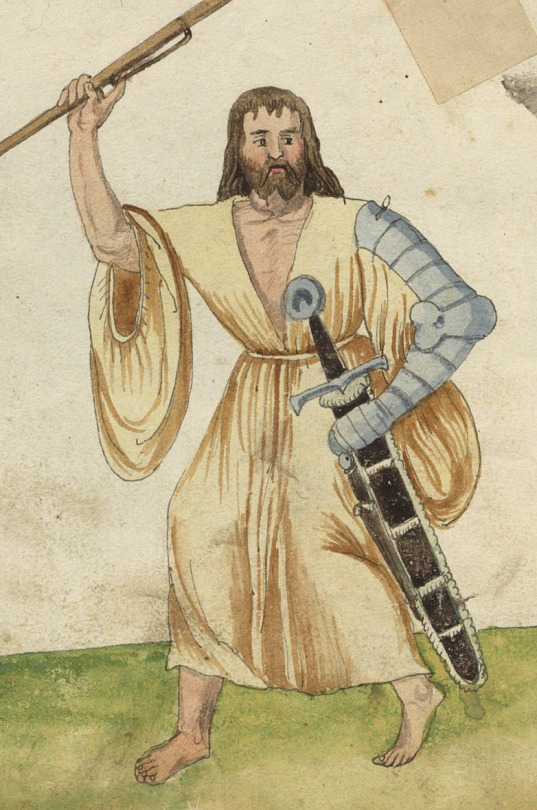
Mid-16th c. images of the léine from "Drawn after the Quick" and Codice de Trajes
The léine of 16th century Ireland had huge, iconic sleeves. Sadly, we have neither surviving examples of this garment, nor detailed period documentation, so we don't know how these sleeves were made. I have seen a couple different sewing patterns purposed, but none of these match the voluminous, gathered sleeves shown in the Codice de Trajes and the costume album of Christoph von Sternsee. This is my attempt to create a sleeve pattern that better matches the surviving evidence.
The cut of léine sleeves probably varied across 16th c. Ireland, potentially impacted by factors like a person's wealth or where in Ireland they lived. It almost certainly changed over time as more of Ireland fell to English colonial conquest. The wearing of the large-sleeved léine was banned by King Henry VIII (McClintock 1943). Lucas de Heere’s circa 1575 illustrations show women with much smaller sleeves than earlier images. However, at least during the early part of the century, sleeves did not vary by gender. According to Laurent Vital, the only difference between a man's léine and a woman's léine was that the woman's had gores in the bottom it make it fuller (Vital 1518).
My goal with this project is to create a léine sleeve pattern for an early to mid-16th c. Irish person living outside of the Pale. Since none of the period images or texts are very detailed, I am combining information from several sources.
Englishman Edmund Campion who visited Ireland in 1569 gave the following derisive description of the léine: “Linnen shirts the rich doe weare for wantonnes and bravery, with wide hanging sleeves playted, thirtie yards are little enough for one of them” (Campion 1571).
Campion’s claim that the sleeves were pleated initially struck me as strange. English and continental European shirts from this period frequently had gathered sleeves (Mikhaila and Malcolm-Davies 2006, Arnold, Tiramani and Levey 2008), but pleating isn’t the same thing as gathering. However, other period writers made similar claims. Writing in 1596, Edmund Spenser mentioned "thicke foulded lynnen shirtes” as a garment worn by the Irish (Spencer 1633).
Similarly, Fynes Moryson described the léine as being made of “thirty or forty ells [of linen] in a shirt all gathered and wrinkled,” elsewhere he described it as “folded in wrinckles” (Moryson 1617).
In The Image of Irelande, John Derricke gave the following description of the léine:
Their shirtes be verie straunge,/ not reachyng paste the thie:/ With pleates on pleates thei pleated are,/ as thicke as pleates maie lye./ Whose sleves hang trailing doune/ almoste unto the Shoe (Derricke 1581)
Assuming that Derricke’s description is not just poetic license, I know of one 16th century construction method that matches the description “pleats on pleats [. . .] as thick as pleats may lie,” and that is cartridge pleating. Cartridge pleating is a technique that is more commonly used on thick fabrics like woolens, because a lot of fabric bulk is needed to keep the pleats standing properly, but extant 16th and early 17th c. neck ruffs use cartridge pleating to join massive lengths of fine linen to a neck band (Arnold, Tiramani and Levey 2008).

Cartridge pleating on a thick woolen fabric
A person unfamiliar with sewing methods and terms might well describe cartridge pleating as looking like folds, gathers, or wrinkles.
The léine sleeve patterns commonly used in modern reconstructions are completely flat, like a Japanese kimono sleeve with rounded corners. (There’s also a version which has a drawstring or gathering running along the top of the sleeve. This is a 20th c. Ren Fair invention which has no historical basis.)
The end-on views of the sleeve openings in the recently-discovered images from Codice de Trajes and the costume album of Christoph von Sternsee clearly show that this is not correct. The rounded shape they show for the sleeve end can only be achieved through gathering.


Archer from the von Sternsee costume album and the O’Brien messenger from The Image of Irelande
The best illustration of a léine in The Image of Irelande, the messenger on plate 7, also provides evidence for a gathered sleeve. The way the fabric drapes in the middle of the sleeve suggests that the sleeve is gathered at both ends. Furthermore, the way the mass of a léine sleeve centers under the wearer’s arm when the wearer holds their arm out straight, like the O’Brien messenger, but hangs down like a trumpet when the wearer lowers their arm, like on von Sternsee’s archer also suggests that the sleeve is a symmetrical shape that is gathered at both ends and not a trumpet shape that is only gathered at the wrist end.
With these elements in mind, I went looking for a pattern which would create the correct shape. I used Jean Hunnisett's 15th c. bagpipe sleeve pattern from Period Costume for Stage and Screen and the sleeve pattern from this 1630s English waistcoat (published in Seventeenth-Century Women’s Dress Patterns) as a starting point.

1630s waistcoat sleeve pattern
I replaced the curved sleeve heads in these patterns with the straight sleeve end and square underarm gusset typical of mid-16th-18th c. shirts, since the léine, like the shirt, is an unfitted linen garment, and because the straight edge is much easier to gather all the way around. I don't have any actual evidence for square gussets in 16th c. Ireland, but this pattern definitely needs an ungathered piece at the underarm. Anyone who is bothered by the lack of evidence can use a triangular gusset like the one on the 15th c. Moy gown instead.
After that, I experimented with mock-ups until I figured out how to get the correct proportions. I don't have any training in patterning or draping, so this took several tries. I used my 1/3 scale ball-jointed doll (24 inches tall) as model, because he required a lot less fabric and sewing. Since this was just a mock-up, I used random linen remnants from my stash, and I didn't bother to finish most of the edges.
Here is the final sleeve with the seams sewn together, but before doing the gathering:

This sleeve, on his right arm, is based on the gathered-wrist cuff version of the léine from Codice de Trajes, the von Sternsee album, and The Image of Irelande.
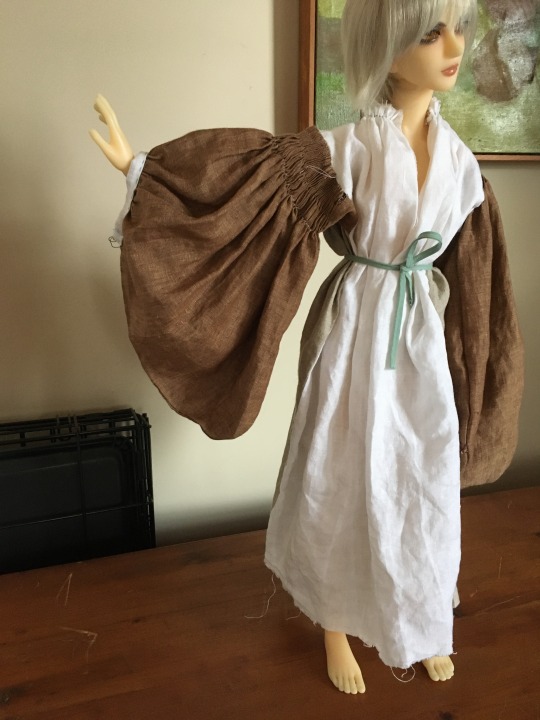


This sleeve ended up with me having to gather 31 inches of fabric into a 5-inch armscye. So yeah, cartridge pleating became necessary, because there is no way to make that kind of reduction work with regular gathering. I also had to do some smocking to get the giant mass of fabric better controlled before I could attach it to the body of the léine.
While this pattern might seem absurd, (it does call for a sleeve end wider than the wear is tall to be pleated into the armscye,) a close examination of John Michael Wright's 1680 portrait of Sir Neil O'Neill shows remarkably similar sleeves.

While this painting is from a century later than my target time period and the clothing clearly shows changes like the addition of English-style shirt sleeve ruffles, the shirt still has elements which I have seen no where else in late 17th c. fashion that are probably derived from earlier Irish dress.
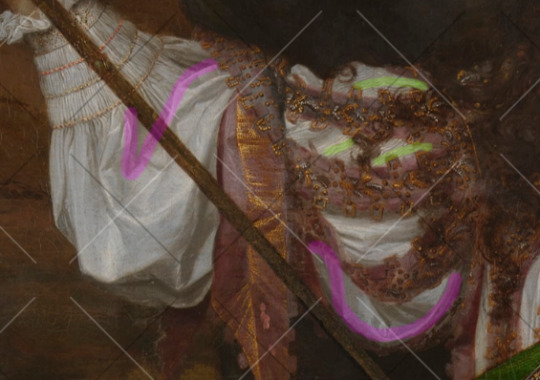
The doublet worn over top prevents it from hanging down properly, but this shirt sleeve has the same bagpipe shape as the 16th c. léine. I have highlighted it in magenta to make this easier to see. The fine, regular folds near the top of the sleeve (highlighted in yellow) are probably the result of smocking or cartridge pleating, indicating that this sleeve, like my purposed pattern, has a large amount of fabric gathered or pleated to the armscye. The wrist end of the sleeve has 3 rows of smocking stitches sewn with silk thread, which shows that the sleeve cuff has a huge amount of fabric gathered into it.
Historically, silk was the thread of choice for smocking, because it is smoother and has greater tensile strength than wool, linen, or cotton. Several 16th c. sources note that the Irish used silk thread when making their léinte (Gresh 2021). Laurent Vital described Irish women as wearing, "chemises with wide sleeves, worked around the collar and in the seams with silk needlework of different colours" (1518). The presence of smocking on O'Neill's shirt combined with my experience trying to recreate this sleeve makes me think that at least some of that 16th c. silk needlework was smocking.
For the left sleeve of my mock-up, I tried to recreate the flatter sleeves from "Drawn After the Quicke". These sleeves do not have a gathered wristband.

This sleeve used basically the same pattern, but the lack of gathering at the wrist opening meant that the whole sleeve was slightly smaller, so I only had to pleat 26 in of fabric into the armscye instead of 31 in. This was just enough of a difference that I could set the sleeve without smocking it first, unlike the right sleeve. I guess this is the more budget-friendly option for your less wealthy kern.

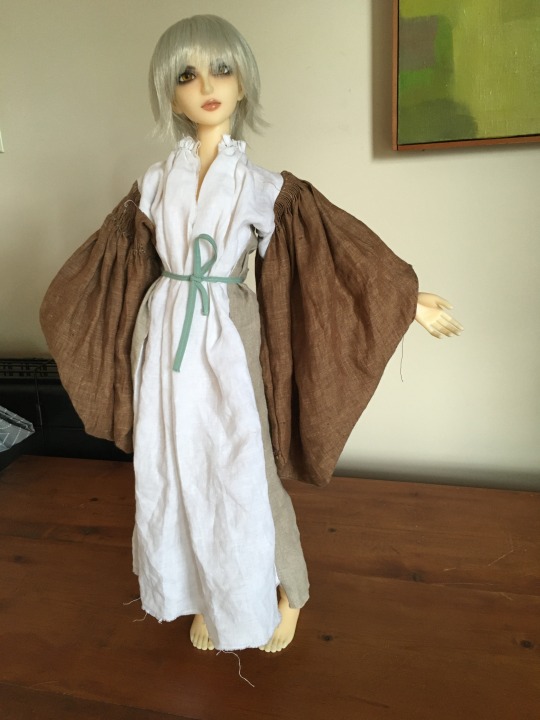
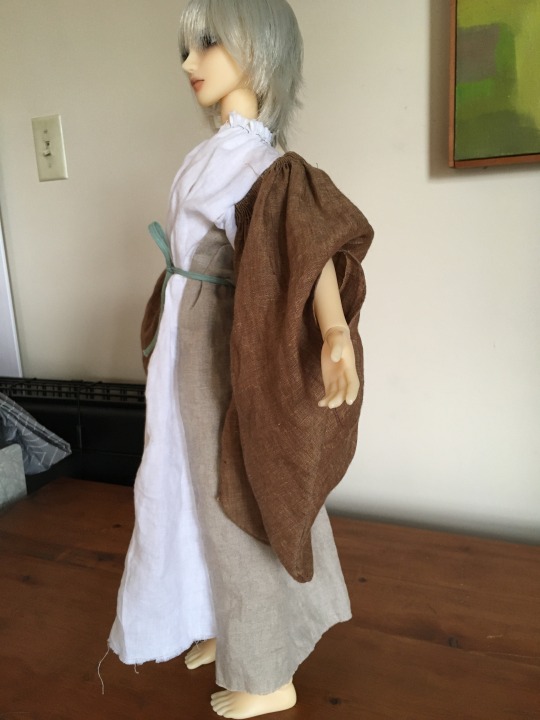
I also made the curve at the bottom of the sleeve wider to give this one a more square shape.
Some of my failed experiments:
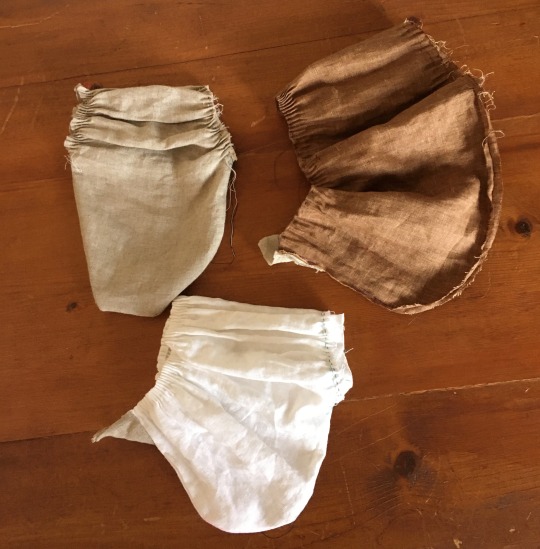
I would like to thank my friend Nikki for loaning me her smocking machine. This project would have been a much bigger pain if I had to do all those gathering stitches by hand.
Since this post has gotten rather long, I am putting the actual drafting instruction for this sleeve pattern in a separate post.
If anyone would like to support my work financially, I now have a ko-fi page.
Bibliography:
Arnold, Janet, Tiramani, J., & Levey, S. (2008). Patterns of Fashion 4. Macmillan, London.
Campion, Edmund. (1571). A Historie of Ireland, Written in the Yeare 1571. Dublin. https://archive.org/details/historieofirelan00campuoft/historieofirelan00campuoft/page/n5/mode/2up
Derricke, John. (1581). The Image of Irelande, with the discoverie of a Woodkarne. John Daie, London. https://archive.org/details/imageofirelandew00derr/page/n29/mode/2up?view=theater
Hunnisett, Jean. (1996). Period Costume for Stage & Screen: Patterns for Women's Dress, Medieval-1500. Players Press, Inc, Studio City.
Gresh, Robert. (2021). The Saffron Shirt, Part 1: Saffron and Silk, Urine and Grease. Wilde Irish. https://www.wildeirishe.com/post/the-saffron-shirt-part-1-saffron-and-silk-urine-and-grease
McClintock, H. F. (1943). Old Irish and Highland Dress. Dundalgan Press, Dundalk.
McGann, K. (2008). The Invention of Drawstrings and Pleated Sleeves. Reconstructing History. https://reconstructinghistory.com/blogs/irish/the-invention-of-drawstrings-and-pleated-sleeves-1
Mikhaila, Ninya, & Malcolm-Davies, Jane (2006). The Tudor Tailor. Quite Specific Media Group, Ltd, London.
Moryson, Fynes. (1617). An Itinerary Containing His Ten Yeeres Travell through the Twelve Dominions of Germany, Bohmerland, Sweitzerland, Netherland, Denmarke, Poland, Italy, Turky, France, England, Scotland & Ireland. volume 4. https://ia801307.us.archive.org/16/items/fynesmorysons04moryuoft/fynesmorysons04moryuoft.pdf
North, Susan and Jenny Tiramani, eds. (2011). Seventeenth-Century Women’s Dress Patterns, vol.1, V&A Publishing, London.
Spencer, Edmund. (1633). A View of the present State of Ireland. https://celt.ucc.ie/published/E500000-001/index.html
Vital, Laurent (1518). Archduke Ferdinand's visit to Kinsale in Ireland, an extract from Le Premier Voyage de Charles-Quint en Espagne, de 1517 à 1518. translated by Dorothy Convery. https://irish-dress-history.tumblr.com/post/721163132699131904/laurent-vitals-1518-description-of-ireland
#16th century#irish dress#dress history#leine#art#gaelic ireland#irish history#historical men's fashion#historical dress#historical women's fashion#sewing
24 notes
·
View notes
Photo

Travel back in time to learn about the artistry on perhaps the world’s most iconic traditional garment — the Kimono. Experience the rich and vibrant history of this simple yet sophisticated garment and the skill, tradition, symbolism, and art it represents through over 600 hundred images. Displayed over 100 full-page color images are supreme examples of the kimono, representing the best from the worlds private and museum collections. These kimonos were created during arguably its greatest artistic peak, in the period 1905 through 1960, when great Japanese aesthetic traditions were in dynamic conversation with avant-garde art from the West.
.
Art Kimonos - Aesthetic Revelations of Japan boasts the most thorough representation of Kimono art to date, but in addition, about two hundred of early to mid-20th century vintage ethnographic images of geisha, actresses, models, and citizens, all wearing artistic examples of the iconic garment; plus, over 100 original kimono-related illustrations dating back to the early 1900s.
Learn about the amazing skill, work, and artistry that was put into creating these bold, inventive, and sophisticated examples. For additional information on this publication, here is a link: https://drive.google.com/file/d/1W0DD8fRb5myVbuVncAATdVLi1ZC_-iHr/view?usp=share_link
122 notes
·
View notes
Photo
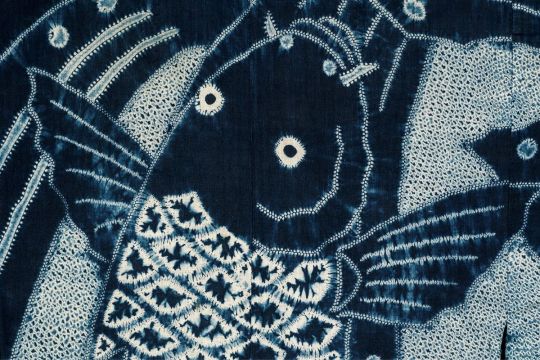
Japan, late 19th-early 20th century, Festival kimono decorated with carp ascending a waterfall made in Akita Prefecture (detail), cloth: cotton; shibori (shape resist)
Minneapolis Institute of Art
258 notes
·
View notes
Photo
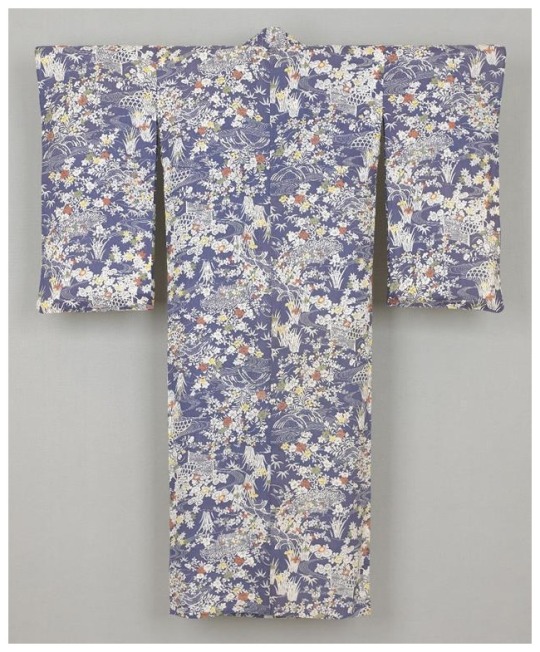

Kimono. Late 19th - early 20th century /Japanese/ Asa cloth with indigo dye (katazome), 58 3/4 x 47 in. (149.23 x 119.38 cm)
This summer kimono is replete with floral and foliage motifs-irises, chrysanthemums, maples, clover-and bamboo baskets set amidst streams of water. Highly detailed and colorful, the composition on textured hemp creates a stylized visual image of the summer and autumn seasons. In addition to the indigo dye stenciled on the main body of the garment, the areas of yellow, orange, and green colors also feature the katazome (stencil) technique, and work effectively to set each other off well.
Seattle Art Museum
Zarina Hashmi (1937-2020) - Untitled, 1968. Oil on canvas / 54 x 71 cm. x
7 notes
·
View notes
Text
Lupin III Chapter 85 Review
ok so, a small part of this chapter was hard for me to understand, and even after asking a couple of people, they also couldn't figure it out
so when that part comes in, my interpretation will marked in italics as something you should take with a grain of salt. thank you c:


Fun fact about the cover on the right, Lupin is dressing up as Isshuku Ippan, a character from one of Monkey Punch's other manga series!
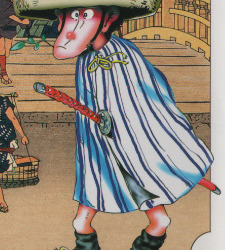

silly guy
let's get onto the chapter!
so lupin's up to some kimono business again and he's facing off a random guy in the rain, he overpowers lupin and is about to kill him, but decides to spare him as he doesn't "kill in cold blood"
he tells lupin to leave, but he doesnt listen and follows him in a house anyway.
then it reveals that the guy and the boss of the clan he's working for actually doesn't know that he's lupin, and refers to him as Isen Miharu.... interesting.

the boss gives the guy a card of a picture of a black serpent, which seems to be some sort of calling card from a thief that just robbed their entire belongings... the boss doesn't seem to be very sad about it weirdly.
he says that this thief, the black serpent, is slick and hard to catch, which reminds him of another thief we know very well... lupin!

while he explains a story about lupin he heard of a while ago, there seems to be different scene playing of these two people preparing for a rokyoku play*. it seems to me that they're the ones retelling the main story?
*a rokyoku play is a genre of traditional japanese narrative singing popular around the early 20th century. in the context of this chapter, the man on the table is the one retelling the story, while the person with the shamisen plays music for the story
lupin had an incident where he was tricked into having sex with a woman who acted like she wanted to sleep with him, but he gets handcuffed instead and gets found by zenigata
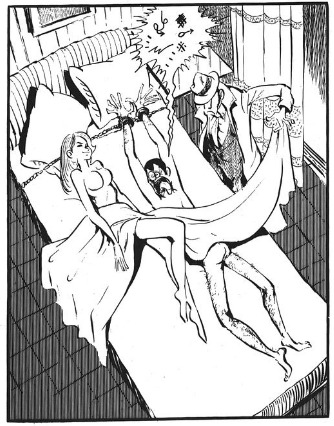
luckily, he escapes, but he couldn't get his handcuffs off.... it seems to be made out of a material he cant break out of.
meanwhile, the rokyoku men get into a tiny accident, where the one playing the shamisen crashes into a wall while trying to act out the scene happening in the main story
hm... so lupin hands are cuffed, and he can't seem to get it out.... during this entire chapter, the dude has never seen this "isen" show his hands before, so he starts getting a little suspicious!
he throws a sake bottle at lupin who smashes it back with a fake hand, and the two get in a battle again

it's obviously a fake hand btw, the way it's positioned is very unnatural
the guy throws a knife towards lupin's fake hands and disarms it, and lupin finally resorts to having to use his cuffed hands to do the job. lupin pulls out a gun, and exposes the guy as the real black serpent behind the robbery
wow what a shocker
he admits to it, and explains that he became a thief to take revenge on the man that killed his father when he was a teen, who was ultimately the boss of the clan he was uncover for!
the boss ends up getting killed, and the black serpent tells lupin to leave him alone, which he finally does.

and the curtain falls, ending the play.
The End.
#this chapter was so hard to do for some reason#ahhhhh#lupin iii#lupin the third#lupin iii manga#monkey punch#local lupin manga fan screams about the manga as per usual
15 notes
·
View notes
Text
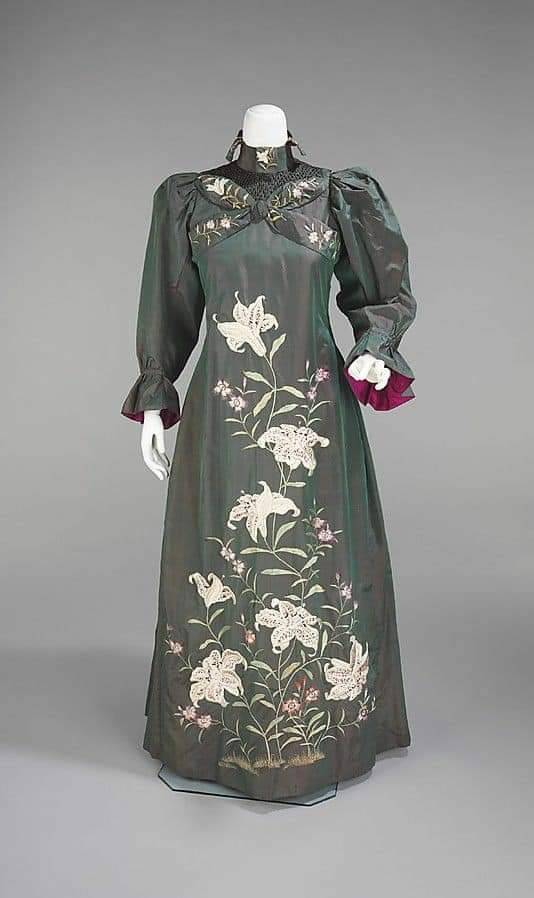


"Tea gown, ca.1898–1901. British
A woman wore a teagown to receive guests in her own home in the late 19th and early 20th centuries. These garments were far less formal and structured that typical day or evening wear, and as a result, sometimes show more creative or unusual inspirations, such as historic or non-Western forms of dress.
This example is a beautifully made and decorated teagown, which shows the influence of both Japanese embroidered kimonos and 18th century robes à la française. Interior padding intended to provide warmth and the deliberate choice of a magenta lining which picks up the purple details in the lily motifs are both signs of superior design and workmanship. Furthermore, the asymmetry of the embroidery is in keeping with the Art Nouveau aesthetic. While the maker is no longer known, the smocking of the bodice clearly relates to the distinctive Liberty & Company fashions in vogue during this period, and the store might easily have been the source for this unparalleled example. -Via The Met".
> Debra Givens > Treasure Trove of Vintage Pleasures
22 notes
·
View notes
Note
Soooo I was scrolling through some older asks, and I found one mentioning ocs-
I'm gonna have to tossmy hat into the ring there. I've been looking for an excuse to redesign the human version of my Polish boio for a while. I just LOVE the idea of engines from different regions sticking to how they would have dressed, or mashes of uniforms and personal touches.
Imagine engines from Eastern Europe, for example, tend to wear fur coats because it DOES tend to get cold there idek
Expect me to send in something...

......soon :>
oooh!!! same hat over here
and yep! I like designing some of my human designs' uniforms similar to how they would've dressed from their home regions, as seen with my hiro design. when designing him I aimed to not disrespect his culture (I based his uniform off the japanese-style waffenrock + haori from the late 19th/early 20th century and gave him a hakama + cloak for his design pre-meeting thomas) and not make him wear inaccurately-designed kimonos to work. it's fun as well
I wonder how your design is going to look! a human design based on polish culture... you've made great points and I'm looking forward to your design!
10 notes
·
View notes
Photo

Kimono Style Through February 20, 2023
Now on exhibit at the Metropolitan Museum of Art in NYC is a show that explores the relationship between this traditional Japanese robe and western culture. I have been surprised how often the word kimono shows up in early 20th century American novels. It is always a woman’s dressing gown in these books although the garment so called was probably not an actual kimono so far as the entire cut of the design. So, I am intrigued to see what exactly was being worn at that time under the name.
This show has not only an exhibition catalog for sale, but a whole gallery of the objects on display which include paintings and prints as well as garment and accessories. Thanks to the curators for sharing online what not all of us can go see.
For more information and the gallery, go here: https://www.metmuseum.org/exhibitions/listings/2022/kimono-style
#vintage kimono#kimono#kimono style#metropolitan museum of art#costume exhibition#fashion exhibition#dress exhibition#costume museum#fashion museum#costume museum exhibition#fashion history#garment design#vintage garment design#costume history#dress history
8 notes
·
View notes
Text
Cotton Hawaiian Shirts
Cotton Hawaiian shirts, also known as aloha shirts, have become a symbol of tropical style and casual elegance. These shirts are made from lightweight cotton fabrics, often featuring bright and colorful prints that reflect the lush landscapes and vibrant culture of the Hawaiian Islands.
The history of the Hawaiian shirt can be traced back to the early 20th century when Japanese immigrant tailors began creating shirts made from kimono fabric with designs inspired by Hawaii’s tropical flora and fauna. These shirts gained popularity among tourists and locals alike and soon became a staple of Hawaiian fashion. Brown hawaiian shirt
Today, cotton Hawaiian shirts are worn not just in Hawaii, but all around the world. They have become synonymous with laid-back style, comfort, and relaxation, and are a popular choice for beach vacations, summer parties, and casual outings.
One of the key features of cotton Hawaiian shirts is their bold and colorful designs. These prints often feature tropical motifs such as hibiscus flowers, palm trees, and surfboards, as well as Hawaiian cultural symbols like tiki statues and ukuleles. These vibrant prints are a reflection of Hawaii’s rich culture and natural beauty and have become a beloved icon of island life.
In addition to their eye-catching designs, cotton Hawaiian shirts are also known for their comfortable and breathable fabrics. The lightweight cotton material is perfect for warm weather, allowing the skin to breathe and stay cool even in hot and humid conditions.
Cotton Hawaiian shirts come in a range of styles, from traditional button-up shirts to more casual pullover designs. They can be worn on their own or layered over a t-shirt or tank top for a more relaxed look. They can also be paired with shorts, jeans, or khakis, making them a versatile addition to any wardrobe. Polyester hawaiian shirt
Cotton Hawaiian shirts are not just a fashion statement, they are also a cultural symbol of Hawaii and its unique heritage. Wearing a cotton Hawaiian shirt is a way to connect with the spirit of aloha, which emphasizes kindness, respect, and love for nature. Whether you’re on vacation in Hawaii or simply looking to add some tropical flair to your wardrobe, a cotton Hawaiian shirt is a stylish and comfortable choice that is sure to turn heads.
0 notes
Text
Vanitas

Girl in red kimono in front of mirror, 1894 | George Hendrik Breitner (1857-1923, Netherlands)

La femme au miroir (the woman with the mirror) | Jacques Cancaret (1876-1941, France)

Vanité, 1889 ca. | Auguste Toulmouche (1829-1890, France)

Interior with standing nude and mirror, early 20th-century | Otto Goetze (1868-1931, Germany)

The flower vendor, 1882 | Victor Prouvé (1858-1943, France)
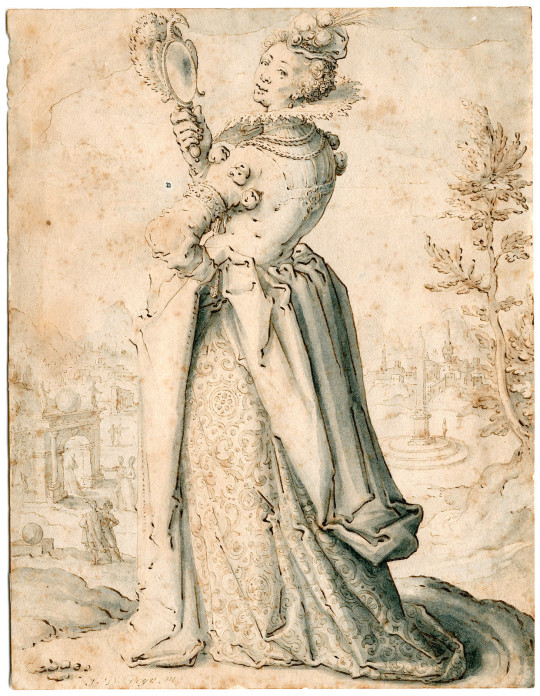
Rerum omnium vicissitudo est (Vanitas) - It is the turn of all things, 1610 ca. | Jacob de Gheyn II (1656 ca. - 1629, Netherlands)
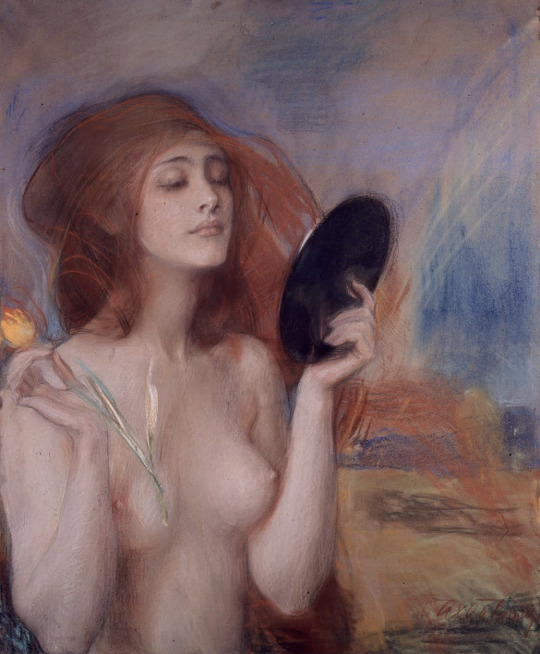
1900 | Teodor Axentowicz (1859-1938, Poland)

Bacio allo specchio (kiss in the mirror), 1913 | Adriana Bisi Fabbri (1881-1918, Italia)

Giovane donna in deshabillé (La Toilette), 1879-80 | Giovanni Boldini (1842-1931, Italia)
1 note
·
View note
Text
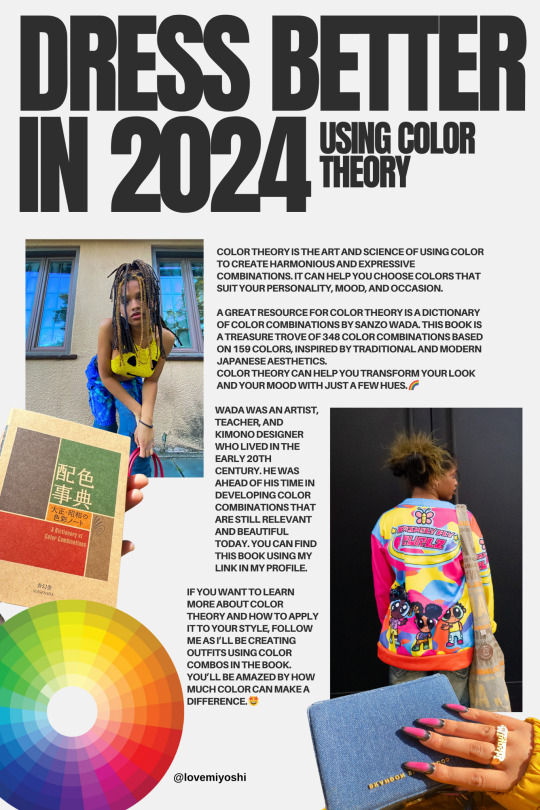
Are you ready to level up your style in 2024?
One of the best ways to do that is to learn more about color theory. 🎨
Color theory is the art and science of using color to create harmonious and expressive combinations. It can help you choose colors that suit your personality, mood, and occasion.
A great resource for color theory is A Dictionary of Color Combinations by Sanzo Wada. This book is a treasure trove of 348 color combinations based on 159 colors, inspired by traditional and modern Japanese aesthetics.
Wada was an artist, teacher, and kimono designer who lived in the early 20th century. He was ahead of his time in developing color combinations that are still relevant and beautiful today. You can find this book using my link in my profile.
Color theory can help you transform your look and your mood with just a few hues. 🌈
If you want to learn more about color theory and how to apply it to your style, follow me as I’ll be creating outfits using color combos in the book. You’ll be amazed by how much color can make a difference. 🤩
PERSONAL STYLING BY MIYOSHI - CLICK HERE
MIYOSHI’S SHOP - CLICK HERE
#runway fashion#me#outfit ideas#fashion#fashion inspiration#high end clothes#luxury fashion#nyc#fall fashion#color theory#dress better#how to dress#personal stylist#styling tips#personal style
0 notes
Text
What is Japanese style jewelry?
Japanese style jewelry is characterized by a unique blend of traditional craftsmanship, cultural symbolism, and a modern aesthetic. Here are some key characteristics of Japanese style jewelry:

Cultural Symbolism: Japanese jewelry often incorporates symbols with deep cultural and spiritual meanings. Symbols such as cherry blossoms, cranes, dragons, and other motifs may be used to convey messages of beauty, longevity, and good fortune.
Nature-Inspired Designs: Japan's natural landscape and its changing seasons greatly influence jewelry design. Cherry blossoms, plum blossoms, bamboo, and other elements from nature are frequently depicted in Japanese jewelry, reflecting a connection to the natural world.
Wabi-Sabi Aesthetics: Wabi-sabi is a Japanese aesthetic philosophy that embraces imperfection, impermanence, and simplicity. Japanese jewelry may embody wabi-sabi principles, featuring understated elegance, asymmetry, and a focus on the beauty of natural materials.
Cultural Heritage: Traditional Japanese craftsmanship, such as origami (paper folding), washi paper art, and traditional textile patterns, often inspires jewelry designs. This connection to cultural heritage adds a sense of history and authenticity to Japanese jewelry.
Precious Metals and Gemstones: Japanese jewelry often features high-quality craftsmanship using precious metals such as gold and silver. Gemstones, particularly those with symbolic meanings, may also be incorporated into designs.
Mingei Movement Influence: The Mingei movement, which emerged in Japan in the early 20th century, celebrated folk crafts and traditional arts. This movement had a significant impact on various artistic forms, including jewelry, promoting handmade and artisanal pieces.
Innovative Designs: While rooted in tradition, Japanese jewelry designers are also known for their innovation. Contemporary Japanese jewelry may feature avant-garde designs, experimental materials, and cutting-edge techniques.
Ceramics and Porcelain: Japan has a rich tradition of ceramic arts, and this influence is often seen in jewelry. Ceramic beads, porcelain elements, and traditional pottery techniques may be incorporated into Japanese jewelry designs.
Geometric and Symmetrical Designs: Japanese jewelry often exhibits a sense of balance and symmetry. Geometric shapes and patterns, whether inspired by traditional motifs or modern design principles, are common in Japanese jewelry.
Kimono and Obi Influence: The intricate patterns and vibrant colors of traditional Japanese garments, such as the kimono and obi, may influence jewelry designs. Elements of textile patterns, embroidery, and knotwork are sometimes translated into jewelry.
Tsuba (Sword Guard) Motifs: Traditional Japanese sword guards, known as tsuba, are sometimes used as design inspirations in Japanese jewelry. These motifs often feature intricate metalwork and symbolic elements.
In summary, Japanese style jewelry is a harmonious blend of traditional craftsmanship, cultural symbolism, and contemporary design elements. Whether inspired by nature, cultural heritage, or modern aesthetics, Japanese jewelry exhibits a unique and often timeless appeal.
0 notes